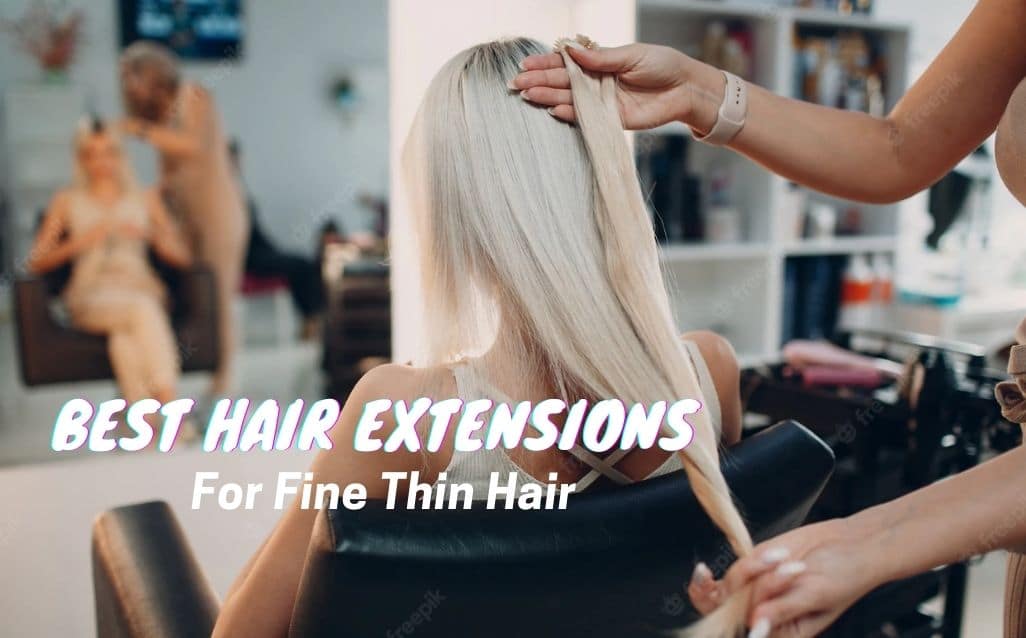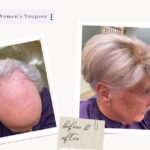There are nine hair ventilation techniques for human hair wigs. Each method has its own individual characteristics and gives its own particular appearance to the hair of a hair system. Fully understanding them all will enable you to make the best possible hair system recommendations to your clients.
Knots are the traditional way of ventilating hair to a hair system. In one of our previous tutorial videos, you learned about two types of split knots: single reverse split knots and double reverse split knots. Therefore, you should know all about how split knots can give a “lift effect” to hair. Today though, we are going to introduce two types of flat knots: single flat knots and double flat knots. As the name suggests, technicians do not need to reverse the hair, instead they just make two strands of hair (the long hair and the return hair) that stay together to make the knot, like how we might make a knot with rope. So, flat knots have a “flat hair effect” unlike the lift of split knots.
- Single flat knots
Like single split knots, single flat knots just need to be twisted once. This is what makes them so small and because of the way they are twisted; they are even smaller than single split knots. However, because of the way we twist the hair; when placed on lace bases, single flat knots become loosened even easier than single split knots. That said, it is important to use this ventilation method on some places of the base. The nature of these knots causes the hair to lay flat on the base. As such, we tend to use single flat knots at the back and sides of the base because it is better that the hair lies flat here. You do not want the hair to point upwards. That way the hair of the hair system will mix well with the wearer’s own hair. If you find your clients’ hairpieces have a messy hair direction on the temples, back and sides, it means single flat knots were not used correctly on these parts of the hairpiece.
Another aspect of single flat knots is that the direction of the hair is very easy to change. That is why we sometimes use them on special places like the temples or the front as they give the wearer more styling options.
As mentioned earlier, single flat knots loosen very easily, so never use these knots with very light-colored hair. This is because very light-colored hair has been processed a lot: the hair strands are very smooth and with the easy-to-loosen single flat knots, the hair will be gone in a very short time. For the same reason, do not use single flat knots with dye-after because dye-after needs light-colored hair.
- Double flat knots
In comparison, double flat knots are much bigger, more like a braided ponytail, and therefore, they are more visible. However, they are much stronger than single flat knots, and they will increase the lifespan of a hair system since the knots will not loosen as easily. Like single flat knots, double flat knots cause the hair to lay flat and close to the base. Their strength and the “flat hair effect” they give is why many people want double flat knots all over the base of their hair system. Having said that, your clients need to be aware that many base materials cannot support double flat knots – they would simply tear and break if you tried to ventilate double flat knots to them. Transparent skin and Swiss lace are two such materials. If someone does request double flat knots all over then we would normally use skin with gauze because it is strong enough to withstand the ventilation of these kinds of knots.
Alternatively, we can use double flat knots on some big-holed base materials. We normally do double flat knots – not double split knots – on integration hair systems or on elastic mesh. The big holes of these bases separate the knots from each other, and they do not stay close to each other. If we use split knots, the hair direction will look messy because the two hair strands of splits knots will point in two directions. Since the two hair strands of flat knots stand close together, the hair direction looks neat and orderly. Therefore, double flat knots are much used on these kinds of big-holed base materials.

Generally speaking, flat knots are not used as much as split knots, but they can create a special flat and neat effect compared to split knots. So once you are aware of this, you can make the best choices for your clients.
As stated at the beginning of this article, there are a total of nine hair ventilation techniques for human hair wigs that you should familiarize yourself with. We have produced a series of articles and video tutorials about how to make a hair replacement system so if you have not already subscribed to our newsletter then we recommend that you do so.
New Times Hair is a wholesale human hair wigs distributor and we have a team of professional sales representatives on hand to assist you with any matter be it to do with a technical aspect of a hair system or our ordering process. We take great pride in the hair systems we produce and you can be rest assured of the quality of them all. You can click on this link to view more about our products: https://staging.newtimeshair.com/hair-replacement-systems/. If you would like any additional information about anything you have read in this article or any other information, then please do not hesitate to contact us at info@newtimeshair.com.




